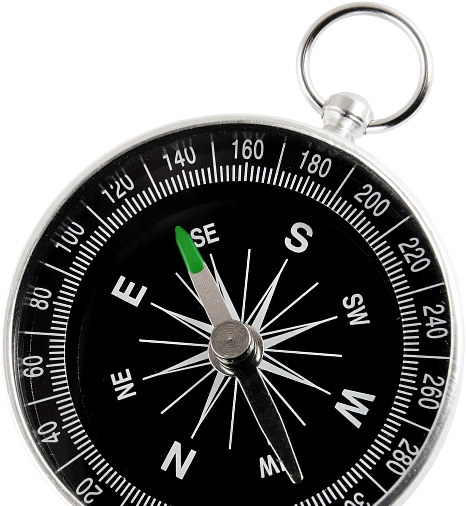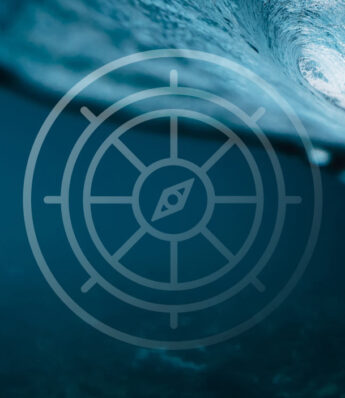Unlocking B2B ROI with Predictive Scoring and Omnichannel Nurturing
12 min

Executive summary
B2B marketers face growing challenges from longer buying cycles and self-directed research. This article equips EMEA-based marketing agencies with actionable strategies to improve ROI by aligning predictive lead scoring with multichannel nurturing.

Please note:
This article is recommended for marketing agency professionals operating within the EMEA region.
According to INFUSE Voice of the Marketer 2025, 75% of marketers still consider prospect volumes as the top performance metric for marketing campaigns. However, increasingly independent B2B buyers and complex decision making processes have diminished the effectiveness of traditional prospect scoring and nurturing methods in driving meaningful ROI for clients.
Modern buyers conduct independent research largely outside of the funnel, with final decisions taking up to a year to finalise.
To address this challenge, a robust demand generation framework that incorporates predictive scoring and omnichannel nurturing allows agencies to target and nurture a client’s prospects where they are in their journey—a crucial advantage in today’s highly competitive market.
By leveraging dynamic data, such as purchasing signals and engagement patterns, predictive models enable precision targeting to ensure optimal resource allocation and higher-quality opportunities aligned with the modern B2B buyer’s journey.
In this article, we outline actionable demand generation strategies for B2B marketing agencies that emphasise predictive scoring and multichannel nurturing to help clients thrive in a rapidly evolving business environment.
What is predictive lead scoring?
Predictive prospect scoring leverages data and machine learning algorithms to evaluate a prospect's likelihood of converting into a client. Predictive lead scoring models analyse data to assign each prospect a dynamic score that quantifies its potential value. This real-time scoring enables agencies to prioritise and refine their nurturing strategies, improving resource efficiency and maximising ROI for clients.
What distinguishes predictive scoring is its capacity to analyse large datasets, uncovering patterns and relationships that traditional methods often miss. Furthermore, the self-learning nature of these models allows them to adapt to shifts in buyer behavior and market conditions, ensuring continuously improving predictions and sustained effectiveness over time.
Benefits of integrating predictive scoring into your demand generation framework
Boost prospect quality and reduce costs by using AI to focus resources where they convert best.
By leveraging AI and data-driven techniques, B2B marketing agencies can offer their clients a more efficient approach to prospect management, one well adapted to the complexities of today’s buying process.
Benefits of this approach include:
Efficiency at scale
Focusing resources on high-value prospects improves conversions, ROI, and reduces acquisition costs
Elevated prospect quality
Combining data sources for accurate prospect qualification ensures that only promising prospects reach sales
Accelerated the sales cycle
Identifying ready-to-buy prospects early enables early outreach and tailored messaging to shorten time to conversion
Improved collaboration and results
Aligning sales and marketing teams with data-driven insights improves lead classification and boosts conversion rates
"Having a really robust AI strategy as a business is important to keep you on track, and so that you know exactly what use cases you will use AI for. Staying ahead of these updates is key. We as marketeers, certainly us as agencies and client-side marketeers, need to be ready to test and experiment in these new channels as they drop. Because things are moving so quickly. If we have something in our strategy that we know is going to be right for us and we need to go and test it and experiment with it quickly, that becomes a business priority.”

Managing Partner, onebite
Step-by-step guide to predictive scoring
Begin by establishing a strong foundation for predictive scoring by aligning it to client-specific goals and personas.
Start by defining your client’s target market—utilise Ideal Client Profiles (ICP) and buyer personas to ensure your targeting covers the entirety of the buying group and their buying journey. This ensures a clear understanding of client personas, key touchpoints, and decision making dynamics.
Your scoring criteria should be tailored to your client’s specific goals and buyer types. By aligning these elements, you can create a solid foundation for accurately identifying and prioritising high-value prospects.
"One thing that's really, really key in any market, but this market in particular, is knowing our customers. According to HubSpot's 2025 State of Marketing report, 25% of marketers genuinely feel they know who they're targeting. That leaves 75% unclear on their ICP. As marketers, we have to understand our buying committee better than ever before. If you don't know your customers, we can't possibly create the right content that resonates with them.”

Managing Partner, onebite
Fuel smarter scoring with privacy-compliant, high-quality data that reflects real buyer behaviour.
This can be achieved by optimising B2B demand generation with zero- and first-party data sources to create a comprehensive data set to utilise for predictive lead scoring and data-driven prospect targeting.
Below is an example of data types and sources for predictive scoring:

GDPR-compliant framework for collecting data:
It is advisable to work closely with legal counsel and data protection officers (DPOs) and to regularly evaluate and update AI models.
Choose the right tools to build adaptable scoring models that surface high-converting prospects early.
Several tools and platforms offer predictive scoring capabilities, often as part of broader marketing automation or client relationship management (CRM) solutions.
These tools leverage machine learning, artificial intelligence, and advanced analytics to prioritise and segment prospects effectively.
Be sure to platform and tool selection depend on your organisation’s size, existing tech stack, and focus area.
These tools can identify factors that have historically influenced prospect conversion, learn from intent signals, patterns of successful conversion, and factors such as content downloads or visits to a pricing page to determine prospect quality.
Based on these criteria, each prospect is assigned a dynamic score that typically reflects:
The cumulative score serves both as an indicator of the prospect's progress through the buyer’s journey and of its quality.
Tools that offer predictive lead scoring functionality include:
CRM Platforms
Marketing Automation Platforms
AI-Powered Sales Tools
Specialised Predictive Analytics Tools
Client Data Platforms
Open-Source and Custom Tools
Align outreach efforts with real-time engagement to improve conversion outcomes.
Modern B2B buyers no longer progress through the funnel in a linear fashion. Instead, they engage across multiple channels, on their own terms, and often outside traditional campaign cadences. Real-time scoring ensures that marketing and sales teams can respond promptly to these evolving behaviours.
Predictive models update scores continuously based on new behavioural signals. For instance:
These dynamic updates enable teams to:
By reflecting both demographic fit and up-to-date behavioural data, real-time scoring improves the accuracy of prospect prioritisation. This approach ensures that resources are focused where intent is strongest, supporting faster conversion and higher pipeline efficiency.
How to implement multi-channel lead nurturing in B2B campaigns
Increase conversions with segmentation that mirrors the complexity of today’s buying groups.
Generating demand and accelerating conversions depends on segmentation strategies aligning with buying groups' complex dynamics.
Modern B2B purchases often involve multiple stakeholders, each with distinct roles and concerns. Identifying these roles and segmenting prospects accordingly allows agencies to craft messaging that addresses group-level dynamics while aligning content with individual pain points and decision making processes.
An example of how predictive lead scoring can empower data-driven demand nurturing:

Dynamic segmentation in omnichannel nurturing
Prospects do not remain static, their needs or interests often developing over the course of their buyer’s journey. Adapt nurturing in real time by reclassifying leads based on their latest behaviour.
Dynamic segmentation models continuously adjust based on real-time lead behavior. AI-driven tools can reclassify leads as they interact with new content, ensuring that campaigns stay relevant. A prospect initially segmented as "awareness" might move to "decision" after engaging with product demos or sales outreach, triggering new nurturing workflows.
Regional segmentation
Nurturing strategies vary across EMEA markets and a one-size-fits-all approach rarely works across EMEA. Maximise engagement with regionally tailored content that reflects local buyer preferences.
To this end, your omnichannel marketing strategy should reflect local buyer behaviors and content preferences.
Below is an example of how regional-specific buyer behaviour influences nurturing tactics in Northern and Southern Europe:

Account Based Marketing (ABM) strategies using predictive lead scoring
Predictive scoring plays a pivotal role in enhancing account based marketing (ABM) strategies, particularly for EMEA B2B marketing agencies investing heavily in buyer-led, intent-driven programs.
Drive ABM success by pinpointing when buying groups are active and ready for tailored outreach.
Predictive scoring can analyse engagement patterns from multiple buyers within the same account or buying group to detect when a buying group is becoming active and flag opportunities.
Once high-scoring targets are identified, ABM campaigns can be tailored to their stage in the buyer journey. This precision ensures outreach feels relevant and timely, increasing engagement rates and accelerating conversion.
Sales and marketing alignment
Eliminate friction with shared scoring insights that unify sales and marketing priorities.
Predictive scoring provides a shared, data-driven way to prioritise accounts between marketing and sales. This allows sales teams to focus on high-scoring accounts already showing buying intent, while marketing teams can nurture lower-scoring accounts with targeted content until they become sales-ready.
This reduces friction between teams and ensures that effort is spent on the most promising opportunities.
Key takeaways
Boost engagement with buying groups for your agency’s clients
INFUSE demand experts are ready to craft high-performance demand programs tailored to your clients’ needs.












